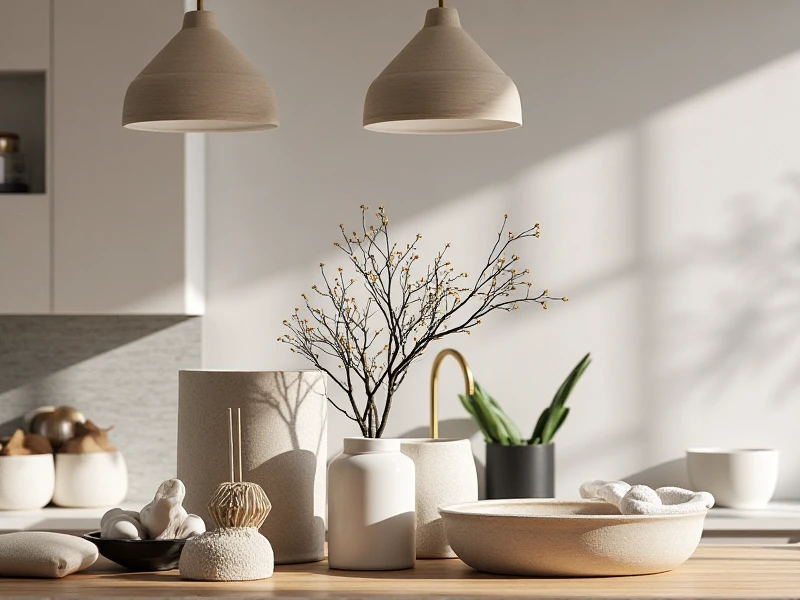Choosing Long-Lasting Furniture: A Guide to Style and Sustainability
2025-06-06

Finding the perfect piece of furniture is more than just aesthetics; it's about investing in comfort, functionality, and pieces that stand the test of time in your home. Whether you're furnishing your first apartment, upgrading your family home, or seeking a sustainable update, understanding key factors in furniture selection can transform your space and your experience. From timeless woods to innovative modern materials, the choices are vast, but core principles of quality, style, and longevity remain paramount.
Beyond Looks: The Foundation of Quality Furniture
Forget flimsy pieces that wobble or discolor within a year. Investing in well-constructed furniture saves money and frustration long-term. Look for these hallmarks of durability:
1. Material Matters: The core component defines longevity. Hardwoods like oak, maple, teak, walnut, and cherry are renowned for their strength and natural beauty. They develop a rich patina over time. High-quality veneers over stable plywood cores offer beauty and stability often at a lower cost than solid wood. Engineered woods like MDF (Medium-Density Fiberboard) can be excellent if paired with quality finishes and strong construction. Consider sustainability: reclaimed wood or FSC-certified sources support responsible forestry.
2. Joinery is King: How pieces are connected makes all the difference. Dovetail joints in drawers, mortise-and-tenon joints in frames, and doweled construction signal strong, lasting assembly. Avoid pieces held together solely by staples, glue, or basic corner brackets.
3. Weight & Feel: Lift, sit, open. Quality wood furniture has substantial weight. Drawers should glide smoothly on sturdy metal or wooden runners without wobbling. Doors should align perfectly and close securely. Sit firmly on sofas and chairs – a stable frame shouldn’t creak or shift significantly. Upholstered pieces need dense, high-resiliency foam padding paired with supportive springs for sustained comfort.
4. Finishing Touches: A good finish protects the material and enhances its look. Look for smooth, even application without drips, brush marks, or cloudiness. On wood, finishes should feel smooth to the touch, not sticky or plasticky. Fabrics should be durable (high rub count – look for ratings like 15,000 double rubs for frequent use) and appropriate for your lifestyle (e.g., treated for stain resistance if you have kids or pets).
Defining Your Style: From Timeless to Trendy
Your furniture should reflect your personality and create a cohesive atmosphere.
Classic: Features elegant curves (like Queen Anne legs), rich dark woods (mahogany, cherry), detailed carving, and traditional upholstery (damask, velvet). Think Chesterfield sofas or Chippendale chairs.
Modern/Minimalist: Clean lines, simple geometric shapes, absence of ornate decoration. Often uses materials like metal, plastic, glass, and lightly stained woods or laminates. Neutral palettes (black, white, grey) are common.
Contemporary: Reflects current trends, often borrowing elements from modern, minimalist, and even mid-century modern styles. Can be more eclectic and experimental with materials and forms.
Industrial: Inspired by warehouses and factories, featuring raw materials like distressed wood, exposed metal, pipes, and concrete. Think utilitarian and rugged.
Scandinavian: Characterized by light woods (like pine, ash, beech), clean lines, functionality, minimalist design, and cozy textures (wool, sheepskin). Focuses on light, airy spaces.
Rustic/Farmhouse: Embraces natural textures, reclaimed wood, visible joinery, distressed finishes, and warm, earthy tones. Often features comfortable, inviting upholstered pieces.
Mid-Century Modern (MCM): Very popular revival style from the 1950s-60s. Features tapered legs, organic shapes, bold geometric forms, pops of color, and mixing of woods with metals and plastic. Sleek yet warm.
Function Meets Form: Matching Furniture to Your Life
How you live dictates what furniture you need.
Space Planning: Measure your room before you shop! Consider traffic flow, outlet placement, window locations, and potential obstacles. Use masking tape on the floor to visualize furniture sizes. Scale is crucial – avoid overwhelming a small space or underscaling a large one.
Lifestyle Needs:
Families/Pets: Prioritize durable, easy-clean surfaces and fabrics. Leather performance fabrics (microfiber, Crypton, Sunbrella) excel here. Darker woods or finishes can hide minor scuffs. Look for sturdy frames on upholstery.
Small Spaces: Seek multi-functional pieces: storage ottomans, nesting tables, sofa beds, extendable dining tables. Light colors and legs on pieces create a sense of airiness.
Frequent Movers: Consider modular or lighter-weight options, or pieces that disassemble easily without compromising structure. Avoid overly delicate finishes.
Home Office: Invest in ergonomic chairs and desks at appropriate heights for comfort during long periods.
The Sustainable Choice: Good for Your Home & the Planet
Conscious furniture choices are increasingly vital:
Longevity: The most sustainable choice is buying high-quality furniture designed to last decades, not years. Avoid fast furniture trends.
Materials: Opt for FSC-certified wood, bamboo, reclaimed wood, recycled metals and plastics. Natural fibers like organic cotton, linen, wool, and jute are often more durable and eco-friendly than synthetics.
Construction: Look for repairability. Can upholstery be replaced? Can joints be tightened? Well-built pieces can be refreshed and revived, extending their life indefinitely.
Vintage & Secondhand: Gives existing pieces a new life. Explore antique stores, consignment shops, and online marketplaces. Often boasts superior craftsmanship.
Brand Ethos: Support companies with transparent supply chains, ethical labor practices, eco-friendly production processes, and take-back/recycling programs.
Your Essential Furniture Buying Checklist:
1. Measure your space.
2. Define your core style.
3. Prioritize quality construction: Check materials, joinery, weight.
4. Test for comfort and function. Sit, open, lift.
5. Examine finishes & fabrics carefully.
6. Consider your lifestyle requirements (durability, maintenance).
7. Evaluate sustainability. Ask questions about origins and materials.
8. Set a realistic budget. Invest more in key pieces like sofas and beds.
Finding the right furniture involves balancing form, function, quality, and personal needs. By focusing on solid craftsmanship and timeless design principles, you build a home filled with pieces you’ll love for years, becoming cherished parts of your life story. Invest thoughtfully, choose sustainably, and create a space that truly reflects and supports you.
Category: